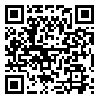BibTeX | RIS | EndNote | Medlars | ProCite | Reference Manager | RefWorks
Send citation to:
URL: http://ijhe.tums.ac.ir/article-1-5571-en.html
2- Ph.D. Student, Department of Geography, School of Humanity, Lorestan University, Lorestan , Iran
3- Infectious Diseases and Tropical Medicine Research Center, Zahedan University of Medical Sciences Zahedan, Iran, AND Associated professor of Medical Parasitology, Faculty of Medicine, Zahedan University of Medical Sciences, Zahedan, Iran
Background and Objective: Malaria is a disease affecting 300–500 million people in tropical and subtropical regions and causes approximately 2.7 million deaths annually. Currently, no vaccine protects against malaria and resistance to anti-malaria drugs such as chloroquine is increasing and spreading geographically. Moreover, anti-malarial drugs are expensive and often unaffordable to low-income populations. A better understanding of the relationship between the El Niño Southern Oscillation (ENSO), the climatic anomalies it engenders, and malaria epidemic could help mitigate the world-wide increase in incidence of this mosquito transmitted disease. There is evidence of a relationship between climate variability and the transmission of mosquito-transmitted diseases. Therefore, in this study we intended to analyze the relationship between ENSO events and annual malaria occurrence (AMO) in Iran to assess the possibility of using ENSO forecasts for improving malaria control.
Martials and Methods: Two types of data were used: The data of annual malaria incidence in Iran were collected from the national and international reports of malaria occurrence in Iran; the annual malaria occurrence data for 38 years (1974-2013) were collected from related sources. ENSO is a cyclic phenomenon, which its frequency is 2 to 7 years (i.e., irregular) and is the second strongest natural driver of climate variability, the first being normal seasonal variability. This oscillation has two different phases: a warm episode known as El Niño; and a cold episode called La Niña, where warm and cold refer to the direction of departure from average of the equatorial Pacific Sea surface temperature (SST), a fundamental indicator of the ENSO state. The Pearson correlation analysis at 0.95 confident level (P-value=0.05) on monthly timescale was used in order to understand the relationship between ENSO and annual malaria occurrence in Iran. The 2-tailed independent parametric T-test was used knowing that whether there is a significant difference between the La Nina years occurrence and El Nino years occurrence.
Results: The results indicated that a slight negative association could be detected between ENSO and annual Malaria occurrence in Iran. Our finding showed that the detected correlation between monthly ENSO and annual malaria occurrence is statistically significant only in months October and May while no significant relationship between ENSO and AMO at 0.95 confident level was found for other months.. The inverse relationship between ENSO and AMO means that the years having higher malaria occurrence coincides with the warm ENSO phases or EL Nino episode while the years having lower malaria occurrence coincides with the cool ENSO phases or La Nina episode. In El Niño episode, the annual occurrence of malaria is about 0.2 to 0.3 higher than La Niña episode years.
Conclusion: The positive association between El Niño and rainfall of Iran resulted in higher occurrence of malaria by proliferation of Anopheles mosquito especially in southern and southeastern region of Iran.
Received: 2015/10/21 | Accepted: 2016/08/24 | Published: 2016/12/20
| Rights and Permissions | |
 |
This work is licensed under a Creative Commons Attribution-NonCommercial 4.0 International License. |





